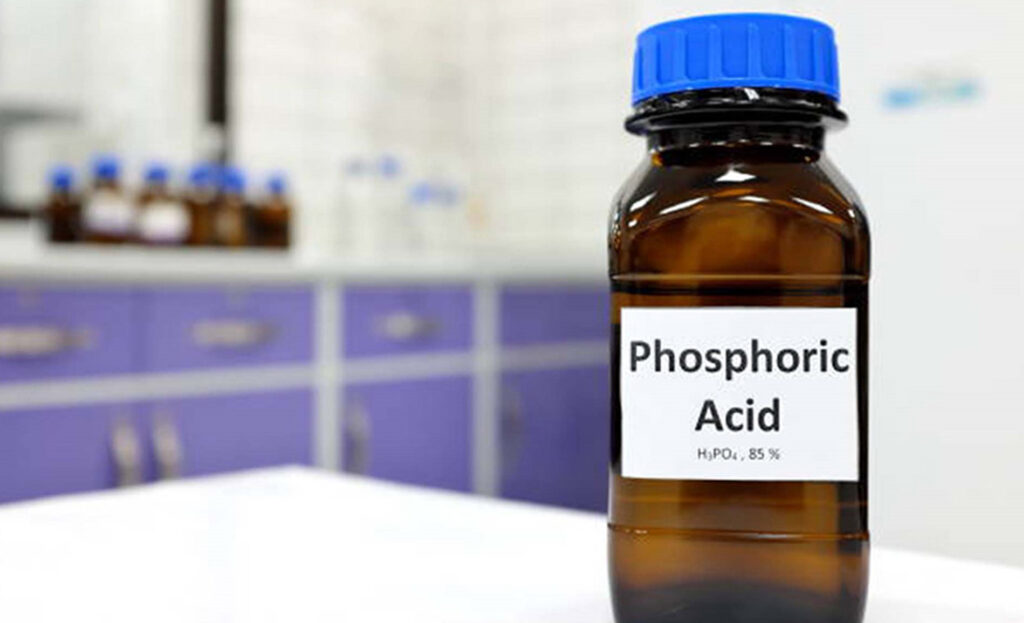Blog
Phosphoric Acid Molar Mass: A Simple Explanation
Phosphoric acid molar mass is a fundamental concept in chemistry that is crucial for many industrial processes and academic research. Understanding the molar mass of phosphoric acid can help in accurate calculations and effective use in various applications. In this guide, we will break down what phosphoric acid is, how to calculate its molar mass, and explore its importance in everyday applications.
What is Phosphoric Acid?
Phosphoric acid (H₃PO₄) is a common inorganic acid widely used in fertilizers, cleaning agents, and food additives. It is a weak acid and plays an essential role in many chemical reactions due to its ability to donate hydrogen ions.
Chemical Formula of Phosphoric Acid
The chemical formula of phosphoric acid is H₃PO₄. This means it consists of three hydrogen (H) atoms, one phosphorus (P) atom, and four oxygen (O) atoms. This composition helps us calculate its molar mass.
How to Calculate Phosphoric Acid Molar Mass
To determine the molar mass of phosphoric acid, we need to look at the individual atomic masses of its components:
- Hydrogen (H): Atomic mass is approximately 1 g/mol
- Phosphorus (P): Atomic mass is approximately 31 g/mol
- Oxygen (O): Atomic mass is approximately 16 g/mol
Using the chemical formula H₃PO₄, we can now calculate the total molar mass:
- Hydrogen: 3×1=3 g/mol3 \times 1 = 3 \, \text{g/mol}3×1=3g/mol
- Phosphorus: 1×31=31 g/mol1 \times 31 = 31 \, \text{g/mol}1×31=31g/mol
- Oxygen: 4×16=64 g/mol4 \times 16 = 64 \, \text{g/mol}4×16=64g/mol

Total Molar Mass of Phosphoric Acid
By adding the molar masses of each element together, we get:Molar Mass of H₃PO₄=3+31+64=98 g/mol\text{Molar Mass of H₃PO₄} = 3 + 31 + 64 = 98 \, \text{g/mol}Molar Mass of H₃PO₄=3+31+64=98g/mol
Therefore, the molar mass of phosphoric acid is 98 grams per mole (g/mol).
Importance of Phosphoric Acid Molar Mass in Industry
The phosphoric acid molar mass is critical in many industries. From fertilizers to food production, accurate knowledge of the molar mass ensures proper usage and efficiency in chemical processes.
Use in Fertilizers
Phosphoric acid is a key ingredient in many fertilizers. Knowing its molar mass helps manufacturers create precise formulations that support plant growth and increase crop yield.
Role in Food Industry
In the food industry, phosphoric acid is used as an additive, particularly in soft drinks to provide a tangy flavor. Understanding its molar mass ensures proper concentration and safety levels in food products.
Applications in Cleaning Products
Phosphoric acid is also a common ingredient in cleaning agents, particularly for removing rust and mineral deposits. The molar mass helps in formulating effective and efficient cleaning solutions.
How to Measure Phosphoric Acid Molar Mass in Laboratory
In laboratories, chemists calculate molar masses through molecular weight determination techniques. Measuring the phosphoric acid molar mass accurately is crucial for researchers and industry professionals when preparing chemical reactions and experiments.
Importance of Accurate Molar Mass Calculation
Accurate molar mass calculation of phosphoric acid ensures that chemical reactions proceed as expected. For example, in titrations and other quantitative experiments, incorrect molar mass can lead to flawed results.
Phosphoric Acid Molar Mass in Everyday Life
Phosphoric and its molar mass may sound like complex terms, but they impact our daily lives more than we realize. The phosphoric molar mass is vital in products ranging from household cleaners to beverages.
Soft Drinks
One common place where phosphoric is found is in soft drinks, like cola. The acid gives the drink its sharp, tangy flavor. However, it is crucial that manufacturers calculate the correct molar mass to ensure the drink is safe for consumption.
Metal Treatments
Phosphoric acid is used to treat and clean metals, such as steel, to remove oxidation (rust). In this process, the molar mass of the acid helps determine the right amount of acid needed to achieve effective cleaning without damaging the metal.
Why You Should Care About Phosphoric Acid Molar Mass
The molar mass of phosphoric is not just a theoretical value; it has real-world applications. Whether you are a chemist, a student, or a business owner, understanding this basic concept can help in various practical situations.
For Students
If you are studying chemistry, mastering how to calculate molar mass is essential. Phosphoric is just one example, but the skills you learn from calculating its molar mass apply to a wide range of chemical compounds.
For Industrial Professionals
In industries like agriculture, food production, and manufacturing, knowing the molar mass of phosphoric is crucial for the quality and efficiency of products. Mistakes in calculating molar mass can lead to inefficient processes or even hazardous outcomes.
Call to Action: Consult With Our Experts
If you need help understanding phosphoric molar mass or applying it to your industry, we are here to assist. Book a free consultation session with Our Expert today and let us guide you through the calculations and applications for your specific needs.
Conclusion
Understanding the phosphoric acid mass is vital in various industries and applications. With a molar mass of 98 g/mol, this compound plays a critical role in food production, cleaning products, and fertilizers. Accurately calculating and applying the molar mass ensures safe and effective usage in both industrial and academic settings.
